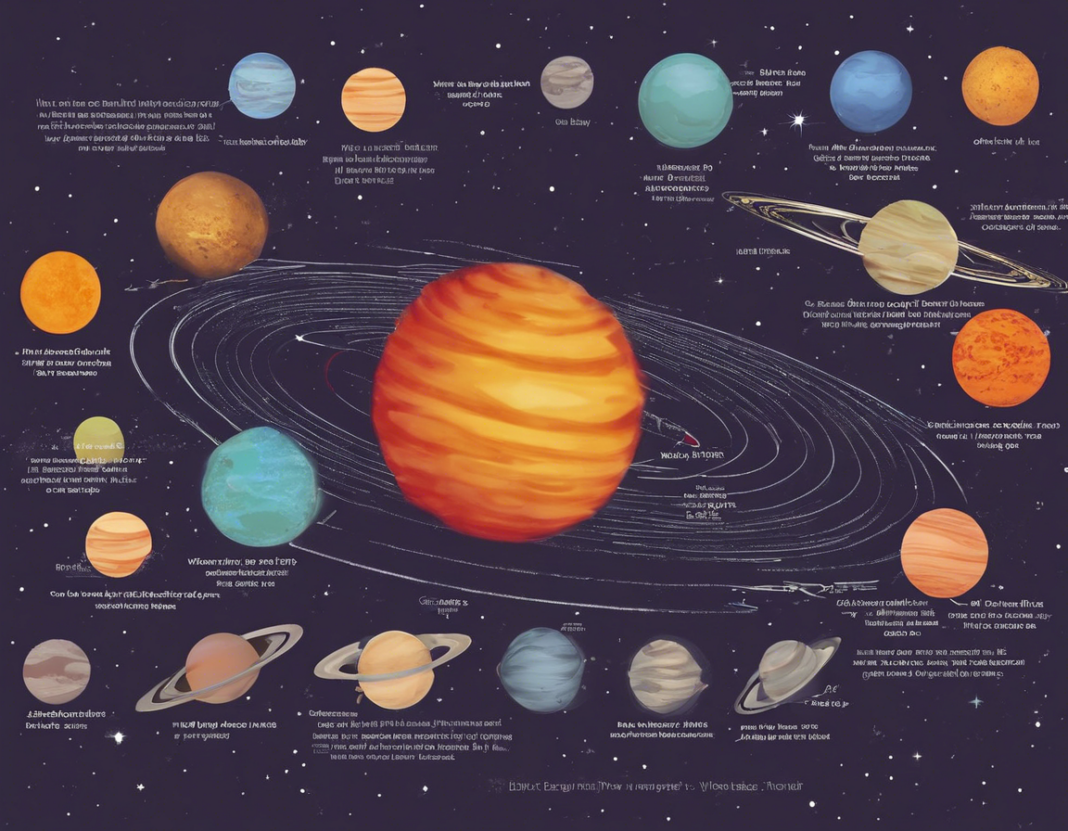Introduction
In the vast expanse of the cosmos, two celestial bodies capture our imagination and wonder – planets and stars. While both planets and stars are fundamental components of our universe, they differ greatly in their composition, characteristics, and roles. Understanding the differences between planets and stars is essential for gaining insight into the diverse nature of celestial bodies that populate our galaxy and beyond.
What is a Star?
At the heart of every star lies a spectacular process known as nuclear fusion, where immense pressure and temperatures cause hydrogen atoms to fuse together, releasing energy in the form of light and heat. Stars are massive, luminous spheres of plasma held together by gravity. The energy they emit is what makes them visible to us, even from enormous distances. Stars come in various sizes, ranging from the smallest red dwarfs to massive supergiants.
Characteristics of Stars
Stars exhibit several key characteristics that set them apart from other celestial bodies:
- Luminosity: Stars are incredibly bright due to the energy produced by nuclear fusion in their cores.
- Temperature: The temperature of a star determines its color, with blue stars being the hottest and red stars being the coolest.
- Size: Stars can vary greatly in size, from compact neutron stars to supergiant stars several times larger than our Sun.
- Life Cycle: Stars go through various stages in their life cycle, from formation to death, with each stage dictated by their mass.
What is a Planet?
In contrast to stars, planets do not produce their own light but instead reflect the light of stars. Planets are celestial bodies that orbit stars and are much smaller in size compared to stars. They are primarily composed of rock and gas and can be terrestrial (rocky) or gas giants (mostly composed of hydrogen and helium).
Characteristics of Planets
- Orbital Motion: Planets revolve around stars in elliptical orbits, following the laws of gravity laid out by Isaac Newton.
- Composition: Planets can have solid surfaces like Earth or be gaseous giants like Jupiter and Saturn.
- Atmosphere: Planets have atmospheres of varying compositions that affect their climate and weather patterns.
- Moons: Some planets have natural satellites, or moons, orbiting around them, exerting gravitational influence.
Differences Between Stars and Planets
Now that we have a basic understanding of what stars and planets are, let’s delve into the key differences that set them apart:
-
Source of Light: The most significant difference between stars and planets is that stars emit light due to nuclear fusion in their cores, while planets reflect light from stars.
-
Size: Stars are significantly larger than planets, with some stars being thousands of times larger than even the largest planets in our solar system.
-
Composition: Stars are primarily composed of hydrogen and helium, the two lightest elements in the universe, while planets have diverse compositions ranging from rocky to gaseous.
-
Luminosity: Stars are incredibly bright and luminous due to the energy they produce, while planets have no light of their own and are only visible due to reflected sunlight.
-
Orbital Dynamics: Stars remain relatively stationary in the sky compared to planets, which exhibit apparent retrograde motion as seen from Earth due to their own orbits around the Sun.
-
Life Cycle: Stars have complex life cycles that include formation, main sequence, red giant/ supergiant phases, and eventual death in the form of supernovae, neutron stars, or black holes. In contrast, planets do not undergo such dramatic transformations and primarily revolve around stars.
-
Gravitational Influence: Stars have a significant gravitational pull that holds entire solar systems together, while planets have lesser gravitational forces that mainly affect their moons.
Conclusion
In conclusion, while planets and stars share the same cosmic neighborhood and often coexist within the same solar systems, they are fundamentally different in their nature, composition, and roles in the universe. Stars serve as the beacons of light and heat that sustain life on planets, while planets offer a diverse array of landscapes and environments for exploration and study. The study of stars and planets continues to unveil the mysteries of the cosmos and our place within it, reminding us of the infinite wonders that await discovery beyond our own celestial backyard.
FAQs – Planets vs. Stars
- Q: Can a planet become a star?
A: No, planets and stars form through different processes, with stars undergoing nuclear fusion in their cores to emit light and heat, while planets do not have the mass or conditions required to ignite nuclear fusion and become stars.
- Q: Why are stars round, but planets can have various shapes?
A: Stars are round due to their immense gravitational forces that compress them into spherical shapes, known as hydrostatic equilibrium. Planets can have irregular shapes due to factors like rotation, composition, and impacts from asteroids or comets.
- Q: Do stars orbit planets?
A: No, stars do not orbit planets. Instead, planets orbit stars due to the star’s greater mass and gravitational pull.
- Q: Can planets exist without stars?
A: Planets are typically formed from the leftover material in a protostellar disk around a young star. While rogue planets that do not orbit a star exist, they are rare and often result from being ejected from their original solar systems.
- Q: Are there planets hotter than stars?
A: While stars are inherently hot due to nuclear fusion, some planets located close to their stars, known as “hot Jupiters,” can have surface temperatures exceeding even the hottest stars in our universe.
This comprehensive guide aims to elucidate the nuanced differences between planets and stars, shedding light on these celestial bodies’ distinct characteristics and roles in the cosmic tapestry. Whether gazing at the night sky or pondering the wonders of the universe, understanding the disparities between planets and stars enriches our appreciation for the limitless diversity of celestial phenomena that surround us.
